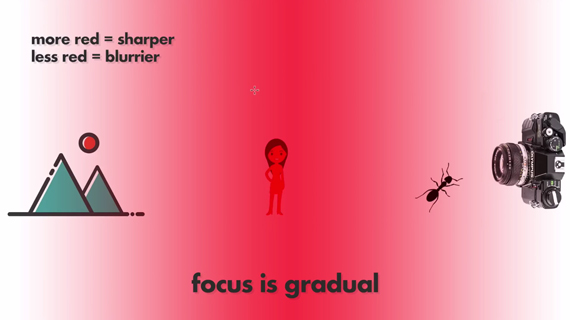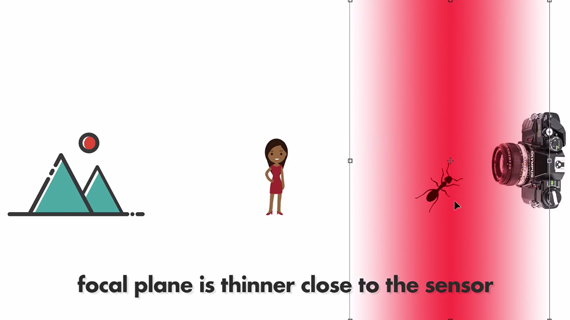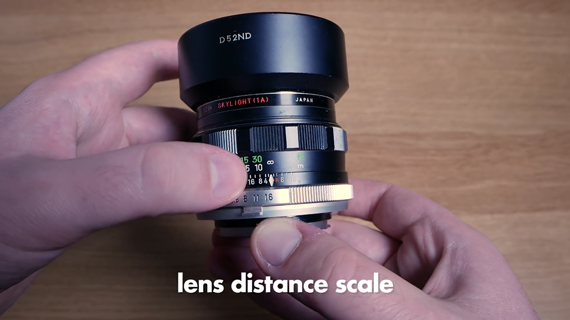Focus is critical in any kind of photo. You may be able to recover some details in post if you miscalculate your exposure. Or crop the image to adjust your composition. But if it’s out of focus, there’s no cure. So it’s crucial for every photographer to understand how focus works. Photographer Micael Widell explains how focus works and how you can use the distance scale on a lens:
Focus and Focal Plane
Widell uses a simple and effective tool to visualize how focus works: the gradient tool in Photoshop. If you’ve ever used the gradient tool, you may have noticed that it’s darkest at the center and gradually fades off on either side. Focus works in a similar way.
Focus is gradual. The plane in which you place your focus point, called the focal plane, is actually very thin. And as we move away from the plane, the subject gets immediately out of focus. But since focus is gradual, the out of focus areas do not become immediately noticeable to the human eye, and it becomes more prominent as we look at a significant distance from the focal plane.
It is also very important to understand that if your plane of focus is very close, like in the case of macro photography, or when the subject is close to the minimum focus distance of the lens, the focal plane gets thinner. This is why we get more background blur when shooting something close to the camera.
So remember, focal plane is thinner close to the sensor and wider far from the sensor. If you feel that you’re not getting a blurry background when taking photos of subjects that are far away, try to move in closer and see if that helps.
Relation Between Aperture and Focus
Aperture is the opening in the lens through which light enters the camera. Besides controlling the amount of light entering the camera, aperture also controls the depth of filed.
Depth of field is the range of area in acceptable focus. Wider apertures, like f/1.4 or f/1.8, have a very shallow depth of field (i.e., the focal plane is very narrow). This results in an image where only a small area is in focus, while the other areas in front and back of the focal plane turn out to be blurry.
On the other hand, narrower apertures, like f/8 or f/11, have a greater depth of field (i.e., the focal plane is relatively wider, resulting in a image where most of the areas are in focus).
Hyperfocal Distance
Have you ever noticed some images where the image seems to be in good focus from the foreground up to the distant background? Chances are that it was shot by setting focus at the hyperfocal distance. Hyperfocal distance is actually the focusing distance at which the depth of field becomes maximum, allowing you to have the frame in acceptable focus up to infinity. Hyperfocal distance is mostly used by landscape photographers to capture images that are sharp from the foreground to the background.
If you happen to have a lens with a distance scale, it is quite convenient to calculate the hyperfocal distance. Just follow these simple steps:
- Set the aperture using the aperture ring. For example, let’s say you set it at f/16.
- Now pay attention to the distance scale just above the aperture ring. Rotate the focus ring so that the infinity sign coincides with the value 16 on the right (because we have our aperture at f/16).
- Note the value that coincides with the value 16 on the left side. Let’s say it’s 5 meters.
Then in this case, it would mean that under these settings, the camera will have everything in focus from 3.5 meters up to infinity.
You may be confused about whether to set your focus on infinity or use the hyperfocal distance when shooting landscapes. As Widell demonstrates, if you have a subject in the foreground and need a shot that is acceptably sharp from the foreground far up to the background, it’s a better idea to use the hyperfocal distance. However, if you’re not concerned about the foreground and need to have the distant subject in focus, set the focus to infinity.
We hope that you learned something from all of these discussions on focus, focal plane, aperture, and hyperfocal distance.
Like This Article?
Don't Miss The Next One!
Join over 100,000 photographers of all experience levels who receive our free photography tips and articles to stay current:








Leave a Reply